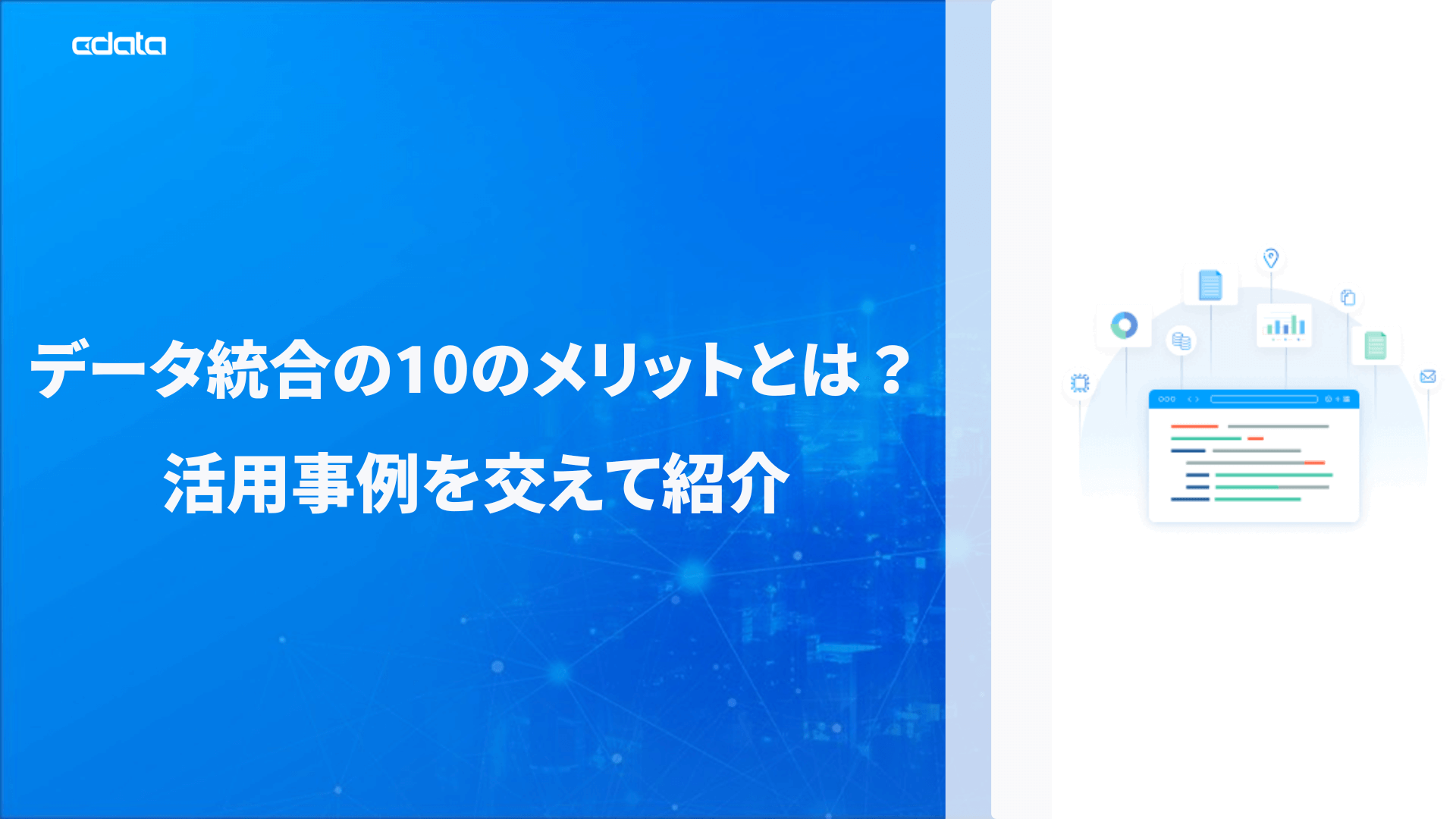ノーコードでクラウド上のデータとの連携を実現。
詳細はこちら →CData Software Japan - ナレッジベース
Latest Articles
- MySQL のデータをノーコードでREST API として公開する方法:CData API Server
- CData Sync AMI をAmazon Web Services(AWS)で起動
- Connect Cloud Guide: Derived Views, Saved Queries, and Custom Reports
- Connect Cloud Guide: SSO (Single Sign-On) and User-Defined Credentials
- Connect Cloud クイックスタート
- Shopify APIのバージョンアップに伴う弊社製品の対応について
Latest KB Entries
- DBAmp: Serial Number Expiration Date Shows 1999 or Expired
- CData Drivers のライセンスについて
- Spring4Shell に関する概要
- Update Required: HubSpot Connectivity
- CData Sync で差分更新を設定
- Apache Log4j2 Overview
ODBC Drivers
- [ article ] Power View でのSFTP データのインポートとビジュアライズ
- [ article ] MySQL Workbench でGoogle Campaign Manager データをクエリ
- [ article ] Linux 上でAutify データに接続するGo アプリケーションを作成する方法
- [ article ] PyCharm でCData Software ODBC Driver を使ってGraphQL ...
JDBC Drivers
- [ article ] Elasticsearch へLogstash 経由でBasecamp データをロードする方法
- [ article ] ColdFusion でKintone データに連携する方法
- [ article ] Bing Ads JDBC ドライバーを使用したOBIEE でのBing Ads レポート
- [ article ] SnapLogic でXero WorkflowMax を外部サービスに連携
SSIS Components
- [ article ] HBase をSSIS 経由でSQL サーバーにバックアップする
- [ article ] SSIS を使ってImpala データをSQL Server にインポート
- [ article ] HCL Domino をSSIS 経由でSQL サーバーにバックアップする
- [ article ] Oracle HCM Cloud データからSQL Server ...
ADO.NET Providers
- [ article ] Infragistics XamDataGrid を使用してBasecamp ...
- [ article ] Authorize.Net データをDevExpress Data Grid にデータバインドする。
- [ article ] Adobe Commerce をHeroku にレプリケーションして、Salesforce ...
- [ article ] LinkedIn をSSIS 経由でSQL サーバーにバックアップする
Excel Add-Ins
- [ article ] DB2 へのExcel データのETL/ELT パイプラインを作ってデータを統合する方法
- [ article ] Microsoft Power BI Designer でCData Software ODBC ...
- [ article ] Mac OS X 上のMS Excel でPaylocity データを連携利用
- [ article ] Web 帳票ツール PrintStream でSharePoint Excel Services ...
API Server
- [ article ] CData Software ODBC Driver を使ってAsprovaをOData と連携
- [ article ] RazorSQL からOData データに連携。
- [ article ] Apache Camel を使用してOData データと連携
- [ article ] SAS でCData Software ODBC Driver for OData を使用
Data Sync
- [ article ] ローカルCSV ファイルへのSharePoint Excel Services ...
- [ article ] MongoDB へのExcel データのETL/ELT パイプラインを作ってデータを統合する方法
- [ article ] Vertica へのMicrosoft Project データのETL/ELT ...
- [ article ] Microsoft Access へのEpicor Kinetic データのETL/ELT ...
Windows PowerShell
- [ article ] PowerShell からSQL Analysis Services ...
- [ article ] PowerShell を使ってBigQuery データをSQL Server にレプリケーション
- [ article ] PowerShell からSAP Fieldglass ...
- [ article ] CockroachDB データをPowerShell でMySQL にレプリケーションする方法
FireDAC Components
- [ article ] Delphi のSendGrid データへのデータバインドコントロール
- [ article ] Delphi のIBM Informix データへのデータバインドコントロール
- [ article ] Delphi のSage Intacct データへのデータバインドコントロール
- [ article ] Delphi のSmartsheet データへのデータバインドコントロール






